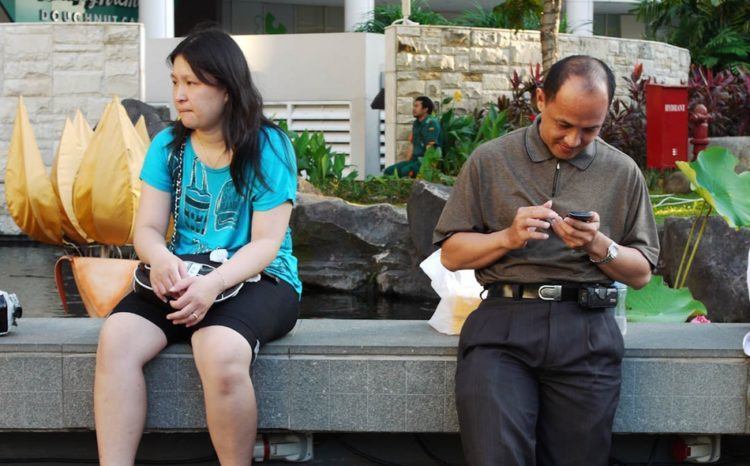
At a mall in Jakarta, Indonesia’s capital. Photo credit: Seika.
With China and India hogging the headlines on a daily basis, it’s easy to forget the other giant in the room. But to ignore Indonesia- the world’s fourth most populous nation closing in on roughly 260 million people – would be folly.
On the digital front, internet penetration across Indonesia rose from 36 percent in 2015 to around 40 percent in 2016. It might not seem like much, but it pegs the number of internet users in the country at 100 million – a number not to be sneezed at.
It gets better. According to market researcher GfK, 93 percent of Indonesia’s internet users access the web via their mobile devices rather than desktops. Local telco Indosat Ooredoo also recorded an increase of 52.5 percent in data usage as compared to last year.
A mobile-first audience

Photo credit: jeshoots.com.
It’s no wonder then that Indonesia’s mobile market is growing by leaps and bounds. IE Market Research estimates that revenue from the mobile entertainment market will grow to a staggering US$845 million in 2016. Guntur Sanjoyo, managing director of GfK in Indonesia, tells Computer Weekly that locals “spend an average of 5.5 hours a day accessing an average of 46 apps and web domains with their mobile device each day.”
According to Indosat Ooredoo’s Acting Group Head of Corporate Communications Thomas Purnawan Suhardja, the startup industry, in particular, has disrupted whole industries – such as banking and retail – improving their processes and infrastructure.
The mobile boom has also fuelled Indonesia’s ecommerce growth, making it rise from US$12 billion in 2014 to US$18 billion last year. This number is expected to jump to US$130 billion in 2020, former spokesperson of the Indonesian tech ministry Ismail Cawidu tells The Straits Times. A study by Google and investment firm Temasek predicts that Indonesia will make up 52 percent of all ecommerce activity in Southeast Asia by 2025.
We Are Social estimates that online sales currently make up less than one percent of the nation’s entire retail sector, while Google estimates this number to be about seven percent of the country’s population. There’s a lot more potential waiting to be revealed in this space.
Much more to be done

A woman preparing grilled chicken skewers, a dish known in Indonesia as Sate. Photo credit:Adhi Rachdian.
But while the country’s mobile boom has unlocked business potential, there are obstacles to overcome. There’s the matter of poor infrastructure and spotty data coverage in many parts of the country, especially in the rural areas. Slow internet speeds inadvertently result in Indonesians only downloading mobile apps that they deliberately search for rather than through browsing, resulting in many apps getting lost in the crowded marketplace.
To address this issue, Indonesia’s telecommunications minister Rudiantara has already issued a stern warning to local mobile operators, threatening to revoke their permits if they “don’t build anything,” according to Bloomberg.
According to Thomas, the government and several stakeholders in the ICT industry are working hand-in-hand with each other in Indonesia’s National Broadband Plan.
In this plan, we are not only covering the development of the “backbone” – Indonesia’s digital nation and ecosystems – but also the human side of ICT, such as nurturing technopreneurs and startups; introducing coding to kids, teenagers, women, and students; improving the connectivity of women to mobile internet; ensuring internet safety and security for Indonesian families, and many more.
The government is also slowly finding ways to involve locals in the mobile app ecosystem. As part of Jakarta’s Smart City program, the Jakarta administration recently partnered with Go-Jek and Porter Delivery Service to sell and deliver food from some four hundred culinary street vendors. For example, the vendors were trained by the cooperatives, micro, small and medium enterprises, and trade agencies.
Big corporations are also pulling their weight and getting involved. Indosat Ooredoo, for example, also runs an annual event called the Indosat Ooredoo Wireless Innovation Contest (IWIC) to encourage digital entrepreneurship amongst Indonesian youngsters. Samsung also holds an annual regional competition called Indonesia Next App, challenging local developers to create applications.
The way things are, it’s almost certain that the next generation will inherit a healthy and thriving mobile market in Indonesia.
About Indosat Ooredoo Wireless Innovation Contest (IWIC)
IWIC is part of Indosat Ooredoo’s CSR program dedicated to innovation and education. It has been widely recognized as one of the most original efforts to encourage digital entrepreneurship amongst Indonesian youth. Indosat Ooredoo has inspired Indonesia’s youth since 2006 to innovate in the field of wireless digital application and develop these innovations into promising and successful businesses. IWIC has received over 7000 applications in the ten years since its founding, and 2016 is the first year in which it has opened applications to international participants.
Submission deadline has been extended to October 9 2016. If you want to register for IWIC, click the button below.
This post Why Indonesia’s mobile market is attracting international companies and talent appeared first on Tech in Asia.
from Tech in Asia https://www.techinasia.com/mobile-market-indonesia
via IFTTT

No comments:
Post a Comment